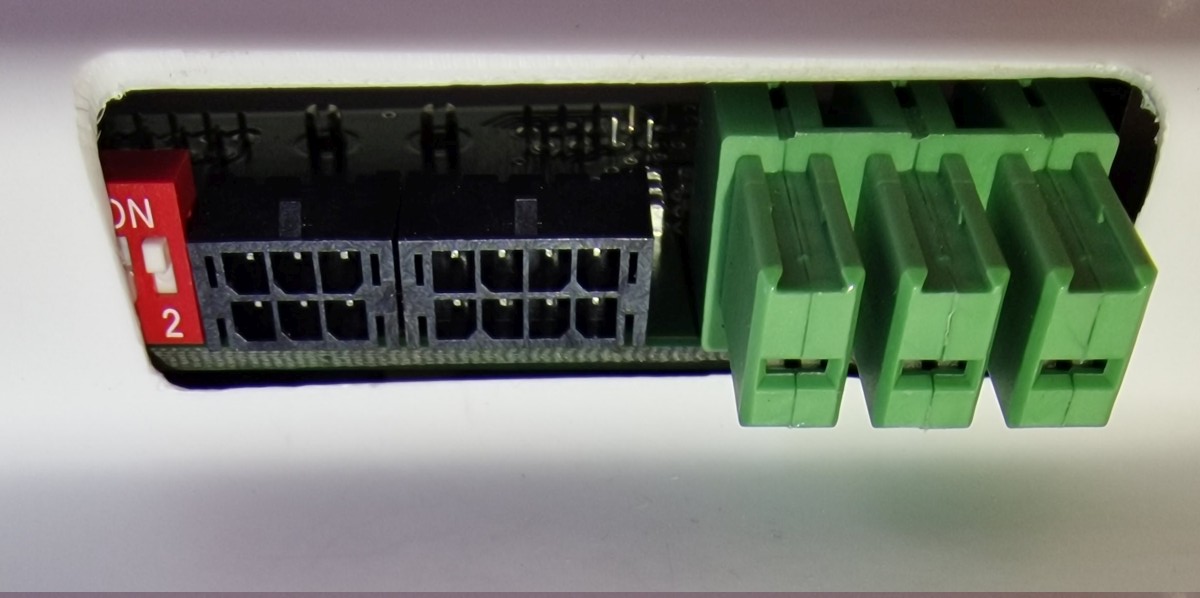Maintenance¶
Information on hardware maintenance, cleaning and general precautions when working on the mobile robot can be found in Maintenance.
Maintenance of the Neobotix ROX is very easy and does not cause much work. As long as the advice in this chapter is kept in mind and the robot is treated accordingly, no major work is necessary.
Please mind the following:
- Always keep the robot clean. Dust and dirt might damage the moving parts or reduce the life expectancy. Metal splinters might cause short-circuiting.
- Check all connectors, especially the high current connectors, regularly and replace them if they show signs of wear.
- Never connect or disconnect any connectors under load. Always turn the robot off before changing any connections.
Warning
Always turn off the robot completely and disconnect both the battery and the charging device before working on the robot. Serious injuries and / or damages might occur if the robot is modified while it is still connected to a power supply!
Cleaning¶
To achieve a long life of the platform and guarantee a satisfying operation, the platform should be checked and cleaned regularly. General information on how to clean the robot and its sensors can be found in Maintenance.
Batteries¶
General information on the available battery type, as well as on battery maintenance and recycling, can be found at Batteries.
AGM batteries lose significant capacity after a few hundred cycles and often need to be replaced after just one or two years, depending on the application. LiFePO4 batteries, on the other hand, are designed for at least 10,000 cycles and do not need to be replaced until considerably later, if at all. Replacing the battery packs on the ROX is almost identical for both battery types and very simple.
Warning
If the mobile robot contains more than one battery pack:
- Never use AGM and LiFePO4 batteries in the same robot!
- Only use complete sets of battery packs and do not mix in battery packs from other robots.
- When charging the batteries outside of the mobile robot make sure to keep the charge levels and voltages of all battery packs identical. Please contact Neobotix if you need cable sets or tools for this.
Combining battery packs with different ages or charge levels in the same robot can lead to high currents, overheating and heavy damage!
Removing the Batteries¶
- Shut down the robot.
- Disconnect the robot from the wired battery charger and move it away from the charging station.
- In case of LiFePO4 batteries, deactivate the batteries by flipping the rocker switch. It must then be impossible to start up the robot.
- Remove the screws of the side cover of the platform and take away the cover.
- In case of LiFePO4 batteries, disconnect the communication cables with the black connectors from the batteries. Press the connectors’ latch before pulling them off.
- Disconnect the green high current connectors from the batteries.
- Remove the screws of the aluminium profiles that hold the batteries in place and take the profiles away.
- Carefully pull the battery packs out of the platform. Take care not to drop the packs when they reach the end of the supporting rails.
- Additional steps might be required if the robot uses additional battery packs, e. g. in the cabinet on top of the platform.
Inserting the Batteries¶
Position the new battery pack on the start of the guide rails and push it all the way into the robot. In case of LiFePO4 batteries, take care to place the batteries into the correct slots, especially the pack with active CAN terminating resistor (see item 3. below).
Mount the aluminium profiles in front of the battery packs and fasten the screws.
In case of LiFePO4 batteries, plug all communication cables with black connectors back into the battery packs. Make sure that the red CAN terminating resistor switch is
Plug the high current cables with green connectors into all battery packs.
Remount the out cover and fasten all its screws.
In case of LiFePO4 batteries, activate the batteries by flipping the rocker switch if you plan to charge or use the robot soon.
